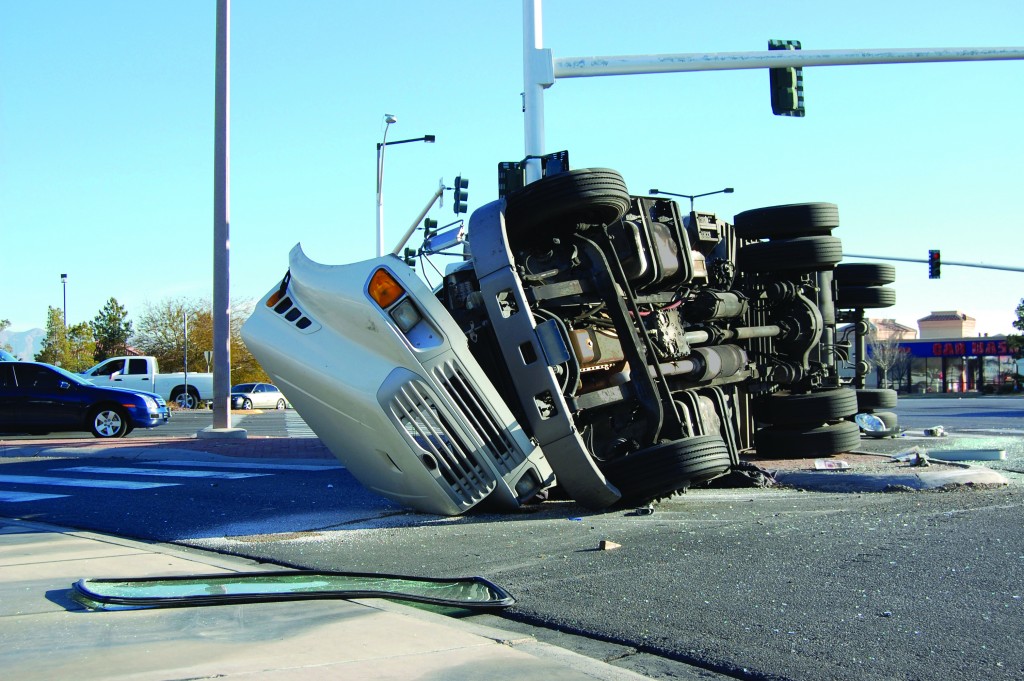Plan a crash response before one happens
A quick survey of attendees at the Fleet Safety Council – Central Chapter’s three-part seminar series on collision preparation and response showed many in the room had the unfortunate experience of dealing with a fatal crash. But when asked how many of them were prepared for that dreaded call, few hands were left raised.
It goes to show that many fleet safety professionals – and those who attend Fleet Safety Council meetings are arguably the best prepared of any – still feel unprepared when it comes time to leap into action in the immediate aftermath of a fatal crash.

Safety consultants Rick Morgan (Link Consulting) and John Farquhar (Summit Risk Solutions) created an ambitious three-part seminar series on critical event response. Day 1, held in Cambridge, Ont., on April 11 focused on how to respond the day of a critical crash. And the format – including role playing, pre-recorded video, and live video featuring subject matter experts – effectively drove home just how quickly things happen when a serious crash occurs.
The event was built around actual crash scene video footage, that for the seminar’s purpose was used to depict a fatal crash involving a small fleet with limited resources, a sketchy safety performance, and basic technologies. The video was “recorded” by the driver for a larger, tech-savvy fleet with more advanced systems and processes in place.
I can’t do Rick and John’s seminar justice in a short blog, but I can share a few things I learned about incident response that I think are important.
OPP response
When the police arrive on the scene of a serious crash, what can you expect from them? An OPP officer said if there are injuries, the crash scene instantly becomes a crime scene. That means no one enters the scene, and no one leaves.
Roads are closed, the traffic sergeant is notified, and any victims’ families are also informed. “This is a crime scene until we deem it otherwise.” Accident reconstruction experts are likely to be called in. The police may seize cell phones, cameras, and engine control units (ECUs) that can be used as evidence if and when a warrant is obtained.
If there’s a hazardous materials spill (or diesel leak), the Ministry of Environment may be called in. Witness statements will be taken. Ultimately, investigating officers will determine if criminal charges should be pursued.
Keep lips sealed
Police are likely to ask your driver what happened? Jodi Burness, head of Burness Paralegal, says drivers could and should stay quiet. The right to remain silent, she said, is “the greatest tool any defendant has to protect him or herself post-event.”
Often, a driver – who is likely not in a good state of mind following a serious crash – talks to the police not knowing what they say can be used against them as evidence. Ensure a driver knows about attorney-client privilege when speaking to their legal representative. Also keep in mind many officers are equipped with body cams, and any comments made to them at the crash scene can be recorded and used as evidence later.
Often, said Burness, drivers say more than they should to what appears to be a sympathetic officer at the scene. That information could come back to haunt them in a courtroom.
Evidence retention
Well-known, recently retired safety professional Tom Boehler discussed the importance of evidence retention. “You need to get on this ASAP,” he said of gathering important data related to a crash. “Preservation of the data is crucial.”
Keep in mind, a truck that’s involved in a crash may have lost its source of power. Sometimes, Boehler said, the tow company on site can supply power to the truck for a telematics download. This is a good reason to have telematics data pushed to the fleet as frequently as possible at all times.
Know who is capable of accessing detailed ECM data, Boehler added. For some OEMs, there are few experts in North America who can download that information. “You want to know who that person is.”
Download dash cam footage and capture stills that provide a view of the crash scene. Preserve ELD data as long as legally required. “Every plaintiff attorney has their own interpretation of how far back they want to go,” Boehler said.
Capture communication sent from dispatch to the driver, going back 90 days prior to the collision, Boehler advised. Plaintiff attorneys may request this, looking for hints the driver was pushed beyond legal means.
Cellphone records – including those of a driver’s personal phone – should be collected. Don’t forget the U.S. phone if a driver has one. Keep all maintenance records, even if the truck is a write-off. Store it somewhere safe where few people have access to it.
Designate someone within the company to be the telematics expert, able to quickly access and analyze all relevant information. And also have designated people within the company responsible for contacting the insurer, lawyer, and if necessary, media. “Keep checklists and processes for retrieving data up to date,” Boehler warned.
The second instalment of the three-part series, focusing on the day after impact, runs May 9. More info can be found here.
Have your say
This is a moderated forum. Comments will no longer be published unless they are accompanied by a first and last name and a verifiable email address. (Today's Trucking will not publish or share the email address.) Profane language and content deemed to be libelous, racist, or threatening in nature will not be published under any circumstances.